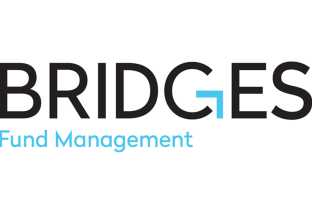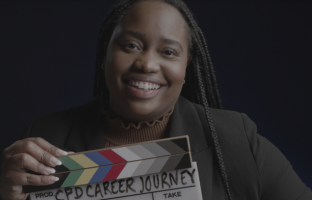Are your organization’s interview processes inclusive and equitable? Or, are there more opportunities to counter bias in your interviews and welcome candidates with a variety of backgrounds and experiences?
The following recommendations for creating an inclusive interview process are based on research from Harvard Business School faculty and Harvard Business Review contributors. They are designed to help organizations think through the details of their interview process to achieve their recruiting goals and create more diverse, welcoming, and successful organizations.
Start with Job Descriptions
To create a welcoming and inclusive environment in the early stages of your hiring process, it is critical to use inclusive language that invites candidates in. Educate team members who are writing job descriptions about removing gendered language, jargon, and idioms that can make potential candidates feel excluded. Job postings are an important marketing tool and should convey an inclusive message if you hope to build a more diverse team.
We also recommend explicitly stating your organization's commitment to diversity and inclusion within job descriptions. Link to Employee Resource Groups, codes of conduct, and other company-wide initiatives to help candidates understand how your organization supports its employees. Also include a reasonable accommodations statement that ensures candidates with mobility, vision, or hearing needs can participate.
Counter the “Just Like Me” Bias
As HBS Professor Youngme Moon noted in an HBS After Hours Podcast, “There are so many industries that have a history of relying on the soft stuff, and the soft stuff has worked in the favor of a particular kind of individual. The truth is the soft stuff is often a euphemism in many cases for bias. For people being able to use their discretion to hire people who are just like them, that they are comfortable with, that look like them, that act like them, that talk like them.”
One way to counter the interviewer’s reliance on the “soft stuff” is to build awareness of why workplace diversity (including, but not limited to, race, socioeconomic status, gender, and sexual orientation) benefits an organization. In addition, if the “likeability factor” does matter to you as an organization and it impacts how employees succeed in the role, Iris Bohnet, director of the Women and Public Policy Program at the Harvard Kennedy School, recommends that organizations give it a direct score as part of the interview process so that it can be rated alongside other skills
Furthermore, be proactive in attracting a diverse applicant pool. Use filters within the HBS resume database to identify students involved in various student clubs including the African American Student Union, Armed Forces Alumni Association, Asian Affinity Business Association, Black Investment Club, Latino Student Organization, PRIDE, Women in Investing Club, and the Women’s Student Association to invite students to apply.
Create Inclusive Video Interviews
When having an in-person interview, the backdrop is generally at your office or on campus. However, with virtual recruiting, interviews will often occur using video calls where the background may be the candidate’s home.
If you plan to use video interviews, set all your candidates up for success by providing video interview best practices in advance, including recommendations for lighting and audio. Some candidates may be coming from professional backgrounds where video calls are not the norm, so guidance can level the playing field.
Also, when conducting video interviews, it’s important to note that candidates may not have access to the latest technology at home or could be sharing living spaces with limited private or quiet areas. These factors do not impact how well a candidate could do the job. Being aware of how background visuals and noise impact your perspective of a candidate's professionalism or fit is critical and can help to address unconscious bias head-on by naming it.
Another option – offer candidates the choice of a phone or online call with the video off in early interactions if that is most comfortable.
Standardize the Interview
In non-standardized interviews, there may be a set of questions guiding the conversation but there is little consistency across the experience for candidates. Often this is where unconscious bias can manifest itself and candidates don’t have the same opportunity to effectively tell their story and showcase their fit for a role.
In a standardized interview, each candidate is asked the same questions in the same order. HBS Professor Francesca Gino notes that this type of interview process helps to reduce bias by “focusing on the factors that have a direct impact on performance.”
Craft a list of questions that are aligned directly with what will define success in this role and remove any that are superfluous or could exacerbate bias. Also, ensure that multiple people within your company either sit in on the interview or conduct their own standard individual interviews so that candidate success is evaluated from different perspectives.
Select Your Questions Purposefully
Along with asking a set of standardized questions, take a critical look at the types of questions your interviewers are asking and what the answers will reveal. Putting the focus on capabilities instead of direct experience allows your organization to be inclusive of varying backgrounds and perspectives in your interview process.
For example, in her article for HBR, Nilofer Merchant recommends, “Instead of asking, ‘Have you done x or y or z?’ you want to ask, ‘How would you approach doing x or y or z?’ This shift in question lets you learn someone’s capacity to think with you.”
Utilize Work Samples
Another way to create an inclusive interview process is to include work sample tests.
This concept is like a case-based interview in which candidates are asked to solve a problem similar to one the company may face. Through this process, employers can assess candidates' skills objectively instead of relying on the candidate’s assessment of their abilities. Furthermore, if two candidates are both given a work sample test, they can be evaluated side by side based on their work, not the employer’s unconscious bias that may influence their judgement.
Key Takeaways
Adjusting your interview process to ensure equity and inclusion makes hiring, and your organization as a whole, more effective. Take the time up-front to utilize these best practices and they will soon become the new normal and serve as an important signal to future employees about what they can expect from a career with your organization.
- Craft inclusive job descriptions that welcome candidates
- Educate interviewers on the benefits of diverse teams to counter “just like me” bias
- Level the playing field during video interviews
- Use the same set of questions for all candidates
- Select questions that focus on capabilities
- Use work samples to assess skills equitably







